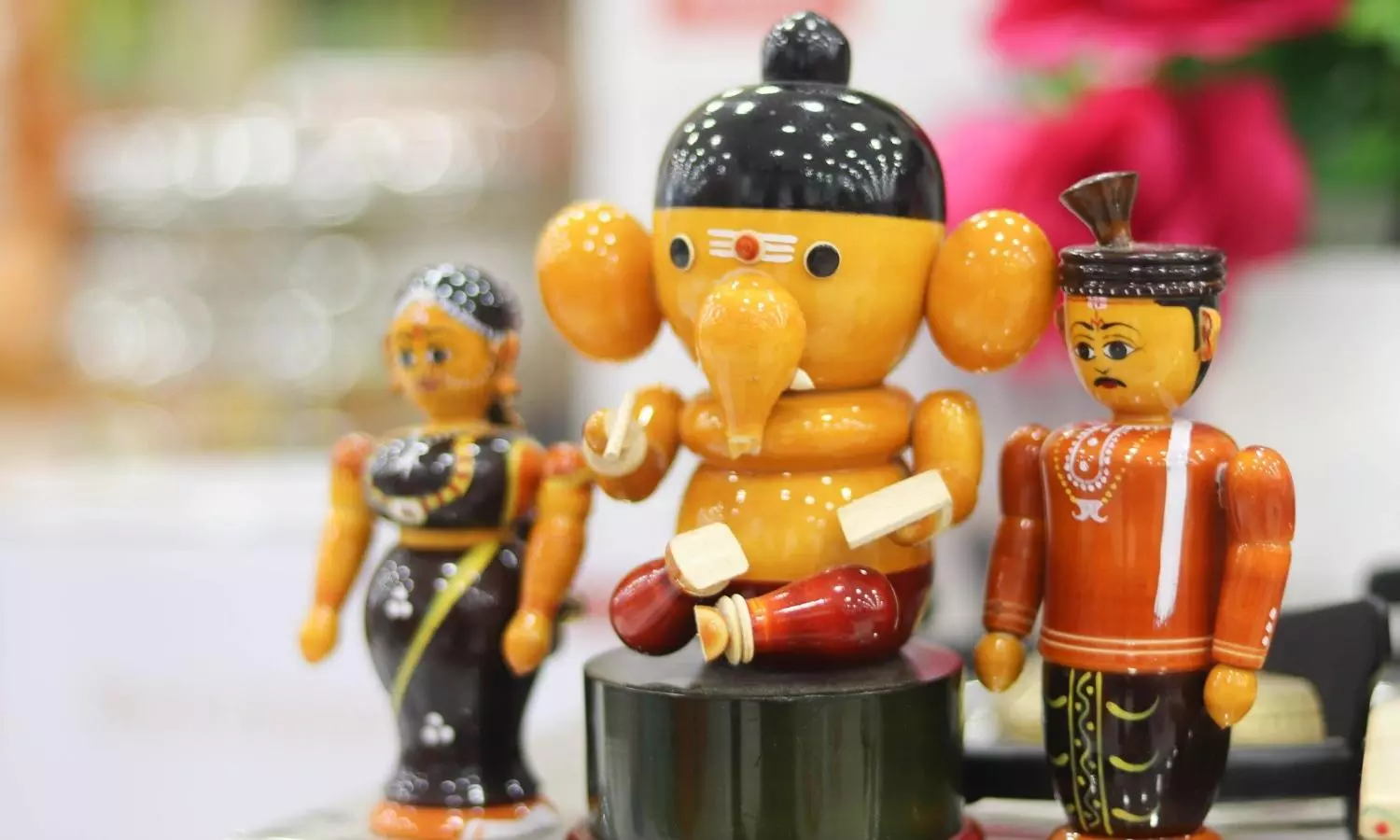
GST reform: Karnataka's Channapatna toys get cheaper
Under the previous GST regime, many artisanal industries faced severe challenges. One major issue was the inverted duty structure, where raw materials were taxed at a higher rate (12-18 per cent)

The production of Channapatna toys required special types of wood and lacquer, both of which attracted high GST rates. Similarly, materials like zinc-copper alloy used in Bidari art, and processed leather for Kolhapuri chappals were also taxed heavily.
With the Union government’s GST reform, not just large industries but also Karnataka’s traditional handicraft sectors — steeped in cultural heritage — are set to receive a major boost.
Also read: GST bonanza: SUVs, small cars get cheaper; relief for premium car segment
The earlier complicated tax structure and inverted duty system had crippled small-scale industries like Channapatna toys, Kolhapuri chappals, Bidari crafts, and leather-based enterprises such as LIDKAR (Dr. Babu Jagjivan Ram Leather Industries Development Corporation). The reforms now promise to revitalise them, making iconic products like Channapatna toys more affordable and competitive.
Challenges under old tax structure
Under the previous GST regime, many artisanal industries faced severe challenges. One major issue was the inverted duty structure, where raw materials were taxed at a higher rate (12-18 per cent) while the finished goods attracted just 5 per cent GST. For example, the wood and lacquer required for Channapatna toys were taxed more heavily than the toys themselves. Likewise, the alloy used in Bidari art and the processed leather for Kolhapuri footwear faced higher taxation.
Also read: Hail GST reform or slam it? Karnataka’s Congress govt in a fix
This disparity in the tax system meant that artisans and small manufacturers had to wait for months to claim refunds through the Input Tax Credit (ITC) mechanism. This locked up their working capital, limiting production capacity and reducing profit margins. To make matters worse, the complexity of tax compliance further stifled the growth of these traditional industries.
Big boost for leather industry
Speaking to The Federal Karnataka, Mundaragi Nagaraju, Chairman of LIDKAR, said: “The GST reforms by the central government will have a hugely positive impact on the leather industry. Earlier, the high cost of genuine leather products pushed customers towards cheaper synthetic alternatives, which often have harmful effects on health.”
Also read: GST 2.0 explained: What India’s new tax regime means for you | K Vaitheeswaran interview
“Now that the government has lowered GST rates, genuine leather goods will become more affordable, encouraging customers to opt for natural leather over synthetic. This shift will be a major boost to the leather industry, and we wholeheartedly welcome the government’s decision,” he added.
Lower GST brings production benefits
Eeshwar, a Channapatna toy manufacturer, told The Federal Karnataka, “The government reducing GST on handicrafts from 12 per cent to 5 per cent has made it cheaper to procure essential raw materials, including non-toxic paints. Earlier, we had to procure raw materials from Madhya Pradesh, and the 12 per cent GST made production costs unsustainable. But now with the GST rate at 5 per cent, production has become more viable and the industry is returning to profitability.”
With GST slabs primarily restricted to 5 per cent and 18 per cent, most handicraft products and their raw materials now fall under a uniform tax rate. For instance, the reduction of GST on footwear and leather products to 5 per cent directly benefits LIDKAR and Kolhapuri chappal manufacturers. This parity removes the discrepancy between the tax rates for raw materials and finished goods.
As tax rates decrease, the final prices of Channapatna toys, decorative Bidari artifacts, and Kolhapuri footwear are expected to drop. This will help these Indian products compete more effectively with Chinese toys and mass-produced international footwear. With increased margins and smoother transactions, artisan incomes will rise.
(This article was originally published in The Federal Karnataka)

